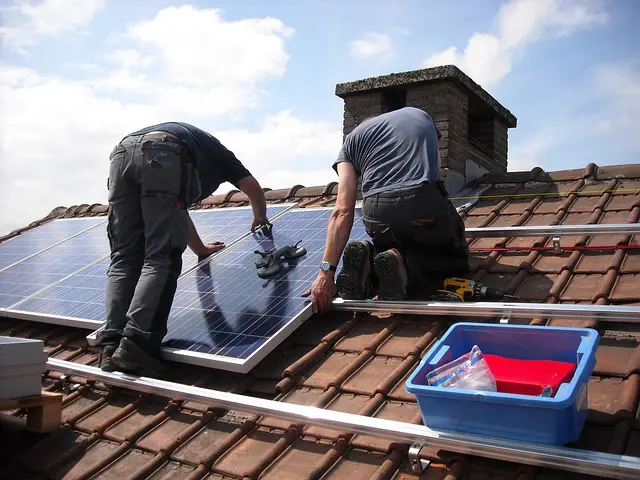Solar energy is a growing trend in the green energy space. They are one of the most affordable forms of power generation and offer an energy-saving opportunity to homeowners.
It’s grown so much that solar now accounts for 4.4% of the global energy production.
Are you interested in switching to solar and want to learn how solar home systems work? Read the guide below to learn the details about solar panels.
What Is Solar Energy?
Before going into details about solar panels, you must understand how solar energy works. Solar power is the energy you get from the sun. The light you see isn’t just bright—it also contains energy you can convert to electricity.
Solar panels have cells that can absorb the energy from the sun. PV cells capture the sunlight they receive and go through a process of converting it to electrical power for other uses.
How Do Solar Panels Work?
Now that you understand what solar energy is, you can begin learning how solar panels work. Read the details below to learn more.
Understanding Solar Panel Cells
The first step to understanding your solar system is understanding the solar cells that draw the energy. You can put them into two categories:
- Monocrystalline
- Polycrystalline
Monocrystalline solar panels use silicon wafers cut from a single crystal. Since these cells are created from higher-grade silicone, they usually produce better efficiency than other solar panel designs.
Polycrystalline solar panels also use silicon to create solar cells. The big difference is that these cells are created by welding together several crystal fragments instead of using a single crystal. Although you can expect less efficiency when doing this, you also get a lower price.
These cells are what absorb energy. They take in sunlight and avoid reflection where possible and convert the sunlight into electrical power.
Install Solar Panels
Once you understand the types of solar panels, it’s a matter of purchasing them and installing them on your home. But there are some important considerations to make.
The first is your power requirements. Calculate how much electricity your home uses and the output of your solar system options. This will tell you the size of the installation you need.
Once you have your solar panels, it’s a matter of installing them on your roof. Have an installer examine your roof to ensure it can stand the load.
If it is, you can install solar panels. If not, you’ll need a new roof before you install your panels.
Convert Power to a Usable Form
The problem with solar power straight from panels is that you can’t use it in your home without converting it to another form. Solar panels create energy in DC form. You need to convert it to AC before using it in your house.
You use an inverter for this task. You typically place an inverter on an exterior wall and feed your solar power into the system. Once your inverter has that power, it converts it to AC for the rest of your house. You’ll tie your power system to your inverter to power your home.
Connect Your Main Electrical Panel
Your home’s primary electrical panel is where power flows into your home. It’s the control center that sends electricity to each room.
You’ll tie your inverter to your electrical panel to supply power. Of course, your solar power may produce more power than your electrical panel.
To account for this problem, you must tie into the energy grid or your own power storage system.
Store Excess Energy
The power your solar installation produces that you can’t use is wasted if you do nothing with it. Given that you can’t always predict when the sun will stay out, it pays to have a backup plan.
The most common way to handle excess energy is to sell it back to the power grid. Many locations have net metering available. You sell your excess to the grid and get energy credits in return.
Whenever your system can’t power your home, you can draw from the grid using your credits to get power.
You also have the option to install battery systems like the Powerwall. New battery systems are much better than a few years ago. You can store a lot of excess energy there and use your battery system to power your home when the sun isn’t out.
Solar Panel Maintenance
Your job isn’t complete after you finish your solar installation. Power degradation will occur over time, but you can reduce that by maintaining your panels.
The first step is cleaning. You don’t want debris to cover your panels and block the sun. Create a schedule to regularly clean your panels to keep them working efficiently.
You’ll also need to run regular maintenance tasks on your panels in the future. You may not want to do this yourself, so call a professional solar contractor for the job.
Solar Home Systems Are Worth Buying
Solar panels have become one of the most popular options for people who want to reduce their carbon footprint. You can install a minimal system on your roof and provide all the power you need to power your home without grid power.
Understanding how solar home systems work will play a vital role in helping you design a solar energy system. You’ll know what parts you need and how the solar panels convert sun energy into a form your home can use. Once you understand the details, you can design a system that meets your power needs.
Did you find this guide helpful and want to learn more about how the different parts of your home function? Check out the blog for more details.
Also Read:
